Target Information
| Target General Information | Top | |||||
|---|---|---|---|---|---|---|
| Target ID |
T76678
(Former ID: TTDI03295)
|
|||||
| Target Name |
IP3 receptor isoform 2 (IP3R2)
|
|||||
| Synonyms |
Type 2 inositol 1,4,5-trisphosphate receptor; Type 2 InsP3 receptor; InsP3R2; Inositol 1,4,5-trisphosphate receptor type 2; IP3R 2
Click to Show/Hide
|
|||||
| Gene Name |
ITPR2
|
|||||
| Target Type |
Literature-reported target
|
[1] | ||||
| Function |
Receptor for inositol 1,4,5-trisphosphate, a second messenger that mediates the release of intracellular calcium. This release is regulated by cAMP both dependently and independently of PKA (By similarity).
Click to Show/Hide
|
|||||
| UniProt ID | ||||||
| Sequence |
MTEKMSSFLYIGDIVSLYAEGSVNGFISTLGLVDDRCVVHPEAGDLANPPKKFRDCLFKV
CPMNRYSAQKQYWKAKQAKQGNHTEAALLKKLQHAAELEQKQNESENKKLLGEIVKYSNV IQLLHIKSNKYLTVNKRLPALLEKNAMRVSLDAAGNEGSWFYIHPFWKLRSEGDNIVVGD KVVLMPVNAGQPLHASNIELLDNPGCKEVNAVNCNTSWKITLFMKYSSYREDVLKGGDVV RLFHAEQEKFLTCDEYEKKQHIFLRTTLRQSATSATSSKALWEIEVVHHDPCRGGAGQWN SLFRFKHLATGNYLAAELNPDYRDAQNEGKNVRDGVPPTSKKKRQAGEKIMYTLVSVPHG NDIASLFELDATTLQRADCLVPRNSYVRLRHLCTNTWVTSTSIPIDTDEERPVMLKIGTC QTKEDKEAFAIVSVPLSEVRDLDFANDANKVLATTVKKLENGTITQNERRFVTKLLEDLI FFVADVPNNGQEVLDVVITKPNRERQKLMREQNILAQVFGILKAPFKEKAGEGSMLRLED LGDQRYAPYKYMLRLCYRVLRHSQQDYRKNQEYIAKNFCVMQSQIGYDILAEDTITALLH NNRKLLEKHITAKEIETFVSLLRRNREPRFLDYLSDLCVSNTTAIPVTQELICKFMLSPG NADILIQTKVVSMQADNPMESSILSDDIDDEEVWLYWIDSNKEPHGKAIRHLAQEAKEGT KADLEVLTYYRYQLNLFARMCLDRQYLAINQISTQLSVDLILRCVSDESLPFDLRASFCR LMLHMHVDRDPQESVVPVRYARLWTEIPTKITIHEYDSITDSSRNDMKRKFALTMEFVEE YLKEVVNQPFPFGDKEKNKLTFEVVHLARNLIYFGFYSFSELLRLTRTLLAILDIVQAPM SSYFERLSKFQDGGNNVMRTIHGVGEMMTQMVLSRGSIFPMSVPDVPPSIHPSKQGSPTE HEDVTVMDTKLKIIEILQFILSVRLDYRISYMLSIYKKEFGEDNDNAETSASGSPDTLLP SAIVPDIDEIAAQAETMFAGRKEKNPVQLDDEGGRTFLRVLIHLIMHDYPPLLSGALQLL FKHFSQRAEVLQAFKQVQLLVSNQDVDNYKQIKADLDQLRLTVEKSELWVEKSSNYENGE IGESQVKGGEEPIEESNILSPVQDGTKKPQIDSNKSNNYRIVKEILIRLSKLCVQNKKCR NQHQRLLKNMGAHSVVLDLLQIPYEKNDEKMNEVMNLAHTFLQNFCRGNPQNQVLLHKHL NLFLTPGLLEAETMRHIFMNNYHLCNEISERVVQHFVHCIETHGRHVEYLRFLQTIVKAD GKYVKKCQDMVMTELINGGEDVLIFYNDRASFPILLHMMCSERDRGDESGPLAYHITLVE LLAACTEGKNVYTEIKCNSLLPLDDIVRVVTHDDCIPEVKIAYVNFVNHCYVDTEVEMKE IYTSNHIWKLFENFLVDMARVCNTTTDRKHADIFLEKCVTESIMNIVSGFFNSPFSDNST SLQTHQPVFIQLLQSAFRIYNCTWPNPAQKASVESCIRTLAEVAKNRGIAIPVDLDSQVN TLFMKSHSNMVQRAAMGWRLSARSGPRFKEALGGPAWDYRNIIEKLQDVVASLEHQFSPM MQAEFSVLVDVLYSPELLFPEGSDARIRCGAFMSKLINHTKKLMEKEEKLCIKILQTLRE MLEKKDSFVEEGNTLRKILLNRYFKGDYSIGVNGHLSGAYSKTAQVGGSFSGQDSDKMGI SMSDIQCLLDKEGASELVIDVIVNTKNDRIFSEGIFLGIALLEGGNTQTQYSFYQQLHEQ KKSEKFFKVLYDRMKAAQKEIRSTVTVNTIDLGNKKRDDDNELMTSGPRMRVRDSTLHLK EGMKGQLTEASSATSKAYCVYRREMDPEIDIMCTGPEAGNTEEKSAEEVTMSPAIAIMQP ILRFLQLLCENHNRELQNFLRNQNNKTNYNLVCETLQFLDCICGSTTGGLGLLGLYINEK NVALVNQNLESLTEYCQGPCHENQTCIATHESNGIDIIIALILNDINPLGKYRMDLVLQL KNNASKLLLAIMESRHDSENAERILFNMRPRELVDVMKNAYNQGLECDHGDDEGGDDGVS PKDVGHNIYILAHQLARHNKLLQQMLKPGSDPDEGDEALKYYANHTAQIEIVRHDRTMEQ IVFPVPNICEYLTRESKCRVFNTTERDEQGSKVNDFFQQTEDLYNEMKWQKKIRNNPALF WFSRHISLWGSISFNLAVFINLAVALFYPFGDDGDEGTLSPLFSVLLWIAVAICTSMLFF FSKPVGIRPFLVSIMLRSIYTIGLGPTLILLGAANLCNKIVFLVSFVGNRGTFTRGYRAV ILDMAFLYHVAYVLVCMLGLFVHEFFYSFLLFDLVYREETLLNVIKSVTRNGRSIILTAV LALILVYLFSIIGFLFLKDDFTMEVDRLKNRTPVTGSHQVPTMTLTTMMEACAKENCSPT IPASNTADEEYEDGIERTCDTLLMCIVTVLNQGLRNGGGVGDVLRRPSKDEPLFAARVVY DLLFYFIVIIIVLNLIFGVIIDTFADLRSEKQKKEEILKTTCFICGLERDKFDNKTVSFE EHIKSEHNMWHYLYFIVLVKVKDPTEYTGPESYVAQMIVEKNLDWFPRMRAMSLVSNEGD SEQNEIRSLQEKLESTMSLVKQLSGQLAELKEQMTEQRKNKQRLGFLGSNTPHVNHHMPP H Click to Show/Hide
|
|||||
| Cell-based Target Expression Variations | Top | |||||
|---|---|---|---|---|---|---|
| Cell-based Target Expression Variations | ||||||
| Different Human System Profiles of Target | Top |
|---|---|
|
Human Similarity Proteins
of target is determined by comparing the sequence similarity of all human proteins with the target based on BLAST. The similarity proteins for a target are defined as the proteins with E-value < 0.005 and outside the protein families of the target.
A target that has fewer human similarity proteins outside its family is commonly regarded to possess a greater capacity to avoid undesired interactions and thus increase the possibility of finding successful drugs
(Brief Bioinform, 21: 649-662, 2020).
Human Tissue Distribution
of target is determined from a proteomics study that quantified more than 12,000 genes across 32 normal human tissues. Tissue Specificity (TS) score was used to define the enrichment of target across tissues.
The distribution of targets among different tissues or organs need to be taken into consideration when assessing the target druggability, as it is generally accepted that the wider the target distribution, the greater the concern over potential adverse effects
(Nat Rev Drug Discov, 20: 64-81, 2021).
Human Pathway Affiliation
of target is determined by the life-essential pathways provided on KEGG database. The target-affiliated pathways were defined based on the following two criteria (a) the pathways of the studied target should be life-essential for both healthy individuals and patients, and (b) the studied target should occupy an upstream position in the pathways and therefore had the ability to regulate biological function.
Targets involved in a fewer pathways have greater likelihood to be successfully developed, while those associated with more human pathways increase the chance of undesirable interferences with other human processes
(Pharmacol Rev, 58: 259-279, 2006).
Biological Network Descriptors
of target is determined based on a human protein-protein interactions (PPI) network consisting of 9,309 proteins and 52,713 PPIs, which were with a high confidence score of ≥ 0.95 collected from STRING database.
The network properties of targets based on protein-protein interactions (PPIs) have been widely adopted for the assessment of target’s druggability. Proteins with high node degree tend to have a high impact on network function through multiple interactions, while proteins with high betweenness centrality are regarded to be central for communication in interaction networks and regulate the flow of signaling information
(Front Pharmacol, 9, 1245, 2018;
Curr Opin Struct Biol. 44:134-142, 2017).
Human Similarity Proteins
Human Tissue Distribution
Human Pathway Affiliation
Biological Network Descriptors
|
|
|
There is no similarity protein (E value < 0.005) for this target
|
|
Note:
If a protein has TS (tissue specficity) scores at least in one tissue >= 2.5, this protein is called tissue-enriched (including tissue-enriched-but-not-specific and tissue-specific). In the plots, the vertical lines are at thresholds 2.5 and 4.
|
| KEGG Pathway | Pathway ID | Affiliated Target | Pathway Map |
|---|---|---|---|
| Calcium signaling pathway | hsa04020 | Affiliated Target |
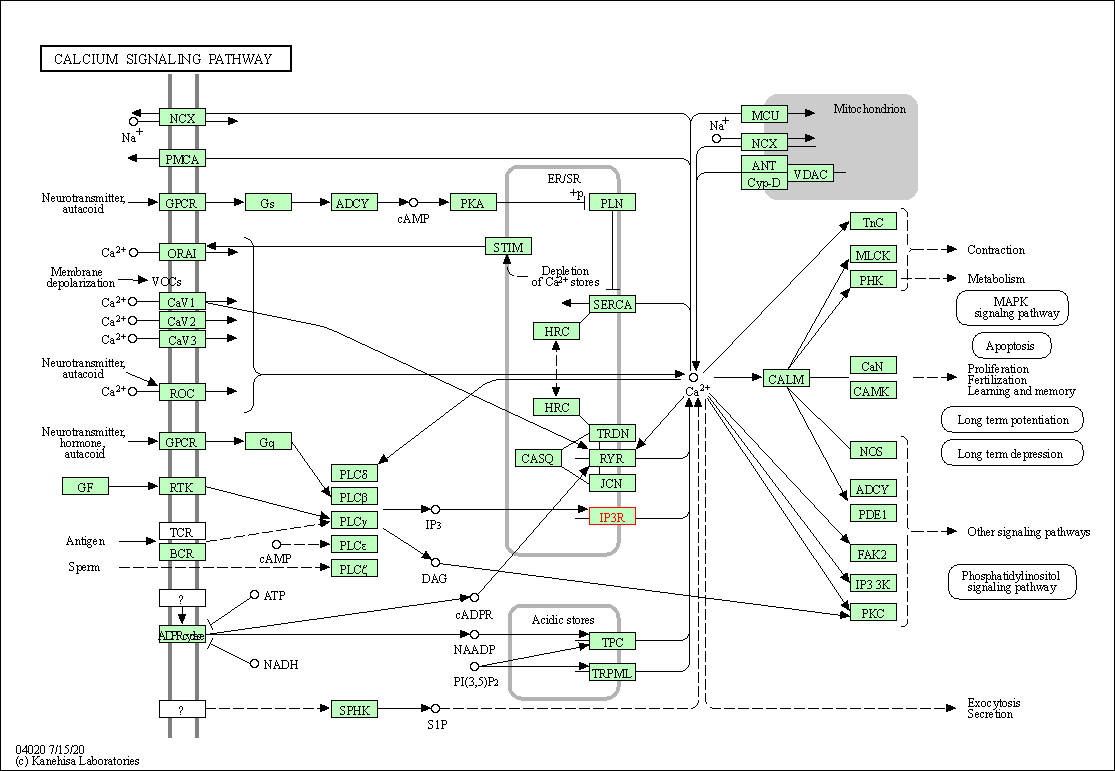
|
| Class: Environmental Information Processing => Signal transduction | Pathway Hierarchy | ||
| cGMP-PKG signaling pathway | hsa04022 | Affiliated Target |

|
| Class: Environmental Information Processing => Signal transduction | Pathway Hierarchy | ||
| Phosphatidylinositol signaling system | hsa04070 | Affiliated Target |
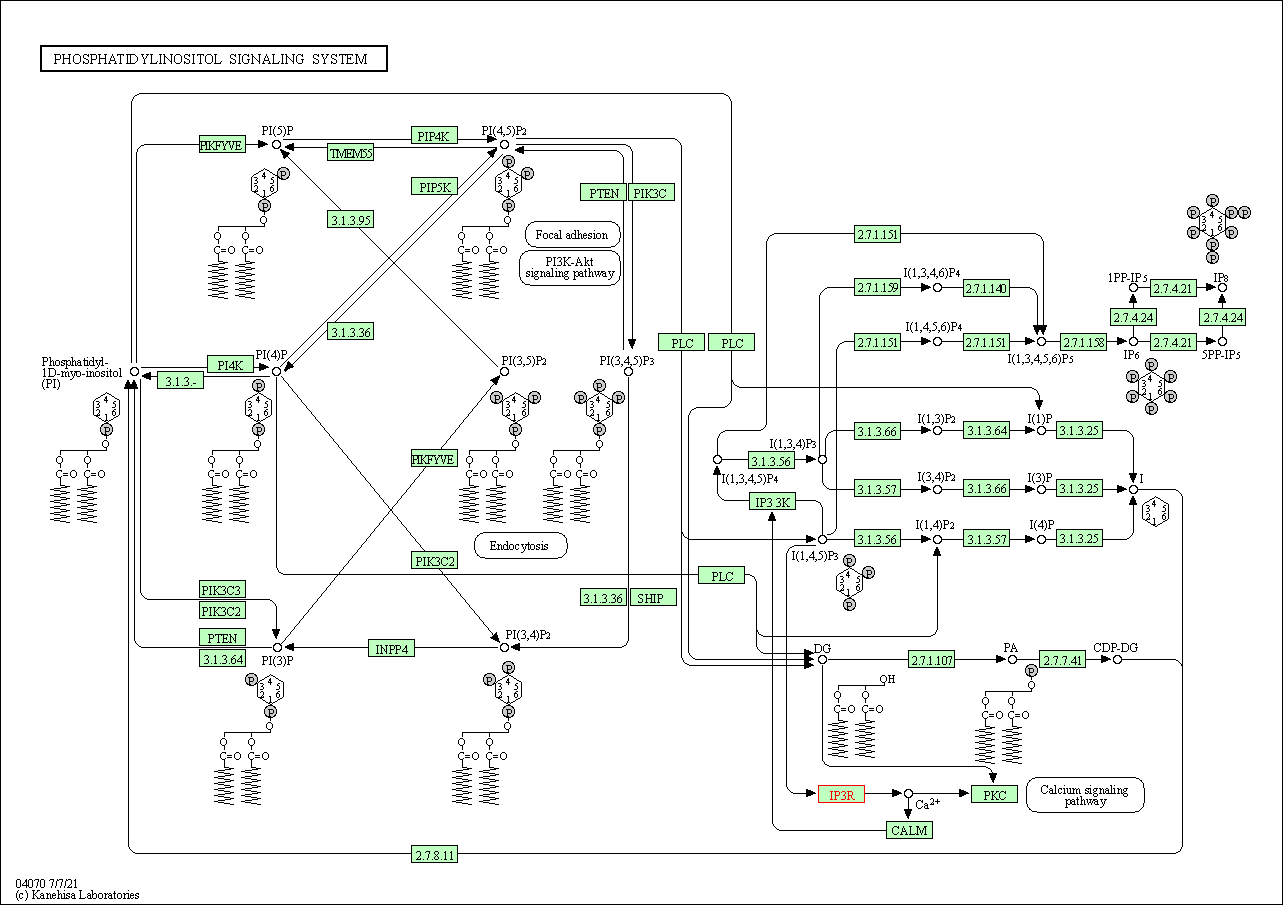
|
| Class: Environmental Information Processing => Signal transduction | Pathway Hierarchy | ||
| Oocyte meiosis | hsa04114 | Affiliated Target |
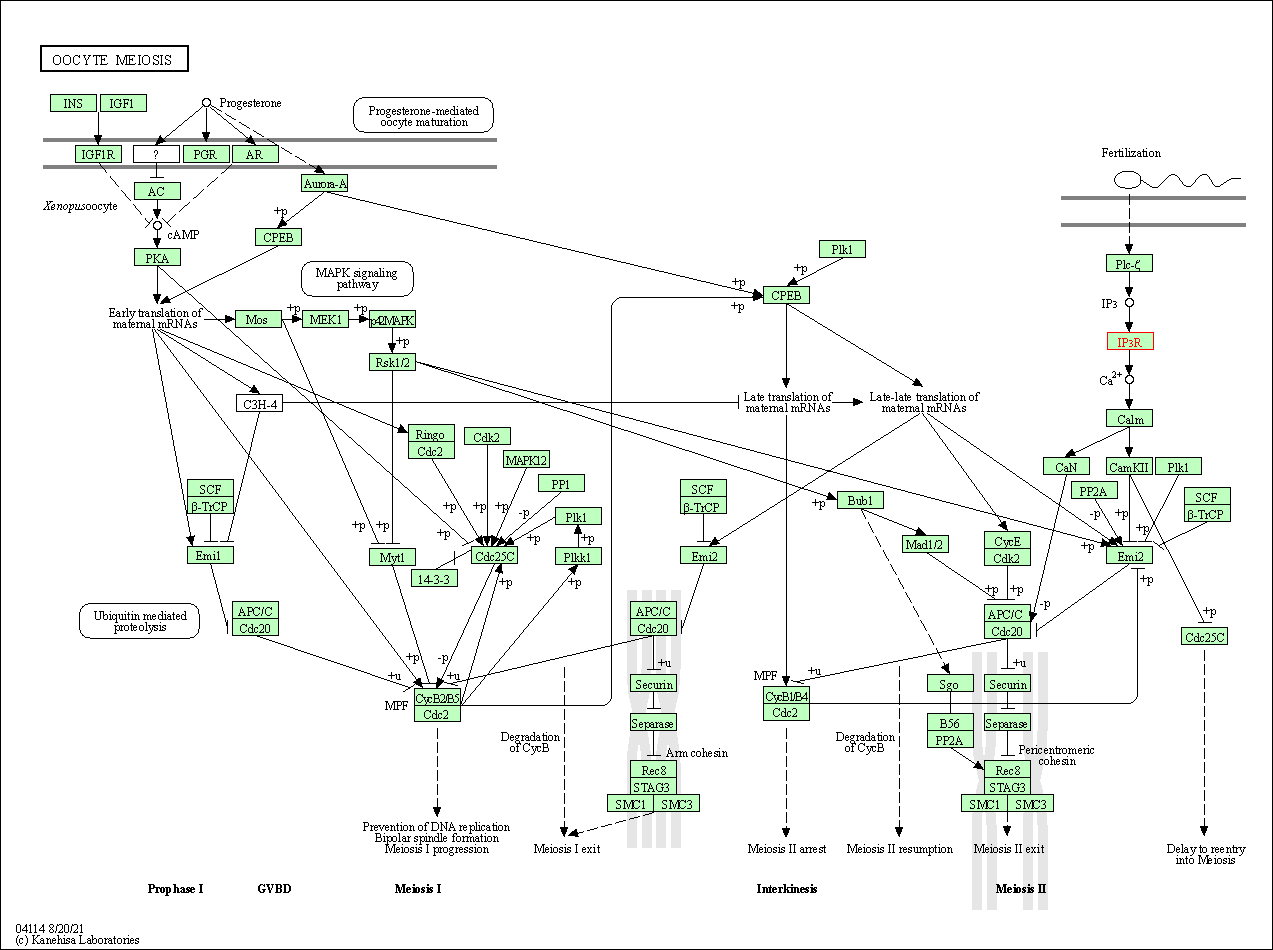
|
| Class: Cellular Processes => Cell growth and death | Pathway Hierarchy | ||
| Apoptosis | hsa04210 | Affiliated Target |

|
| Class: Cellular Processes => Cell growth and death | Pathway Hierarchy | ||
| Cellular senescence | hsa04218 | Affiliated Target |
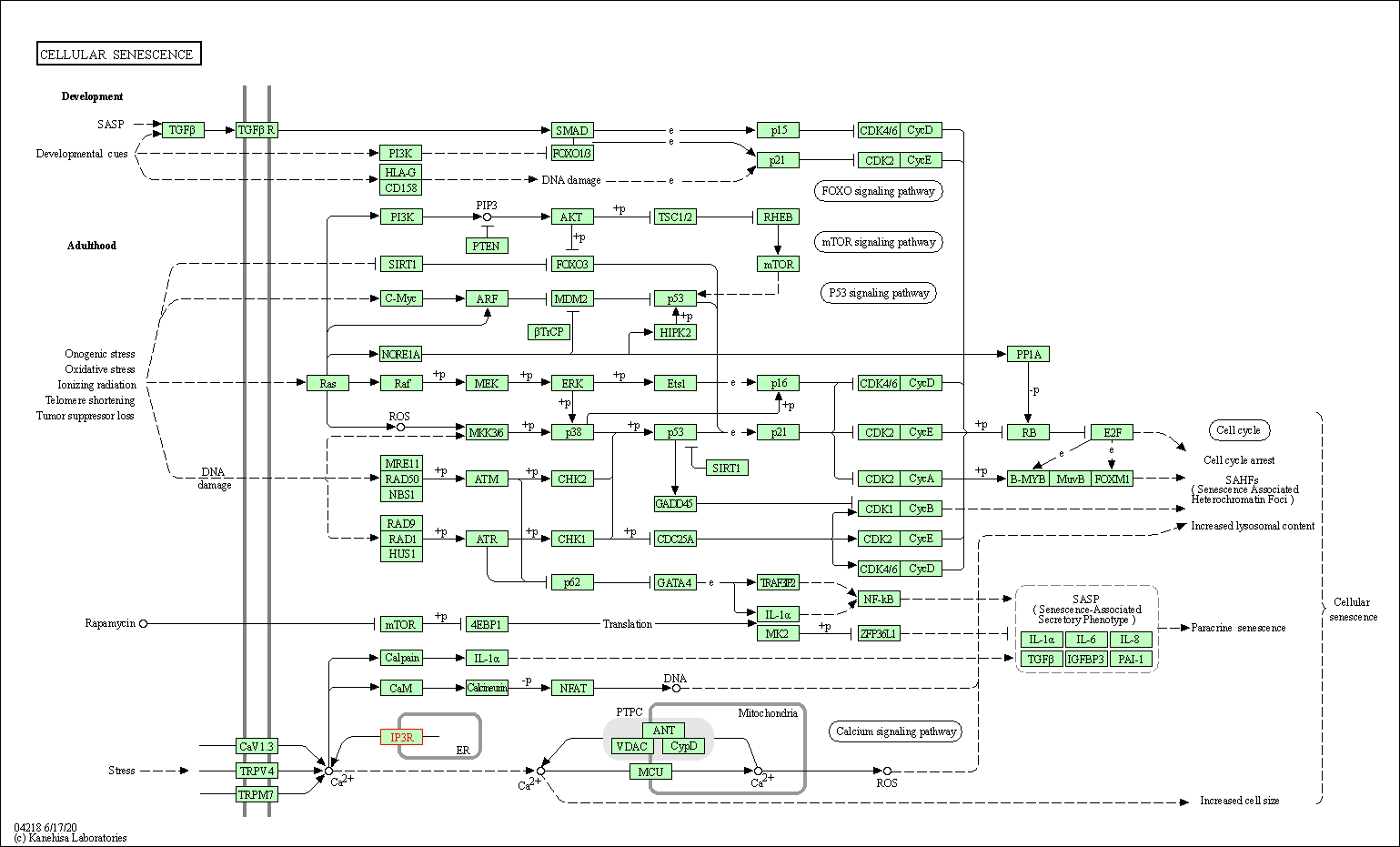
|
| Class: Cellular Processes => Cell growth and death | Pathway Hierarchy | ||
| Vascular smooth muscle contraction | hsa04270 | Affiliated Target |
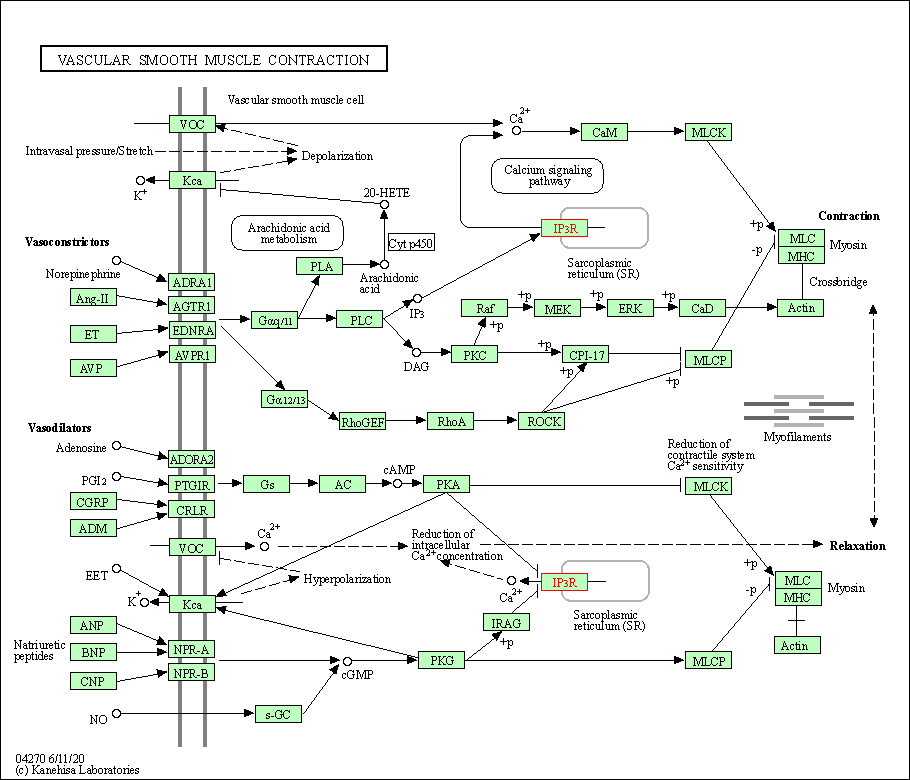
|
| Class: Organismal Systems => Circulatory system | Pathway Hierarchy | ||
| Apelin signaling pathway | hsa04371 | Affiliated Target |
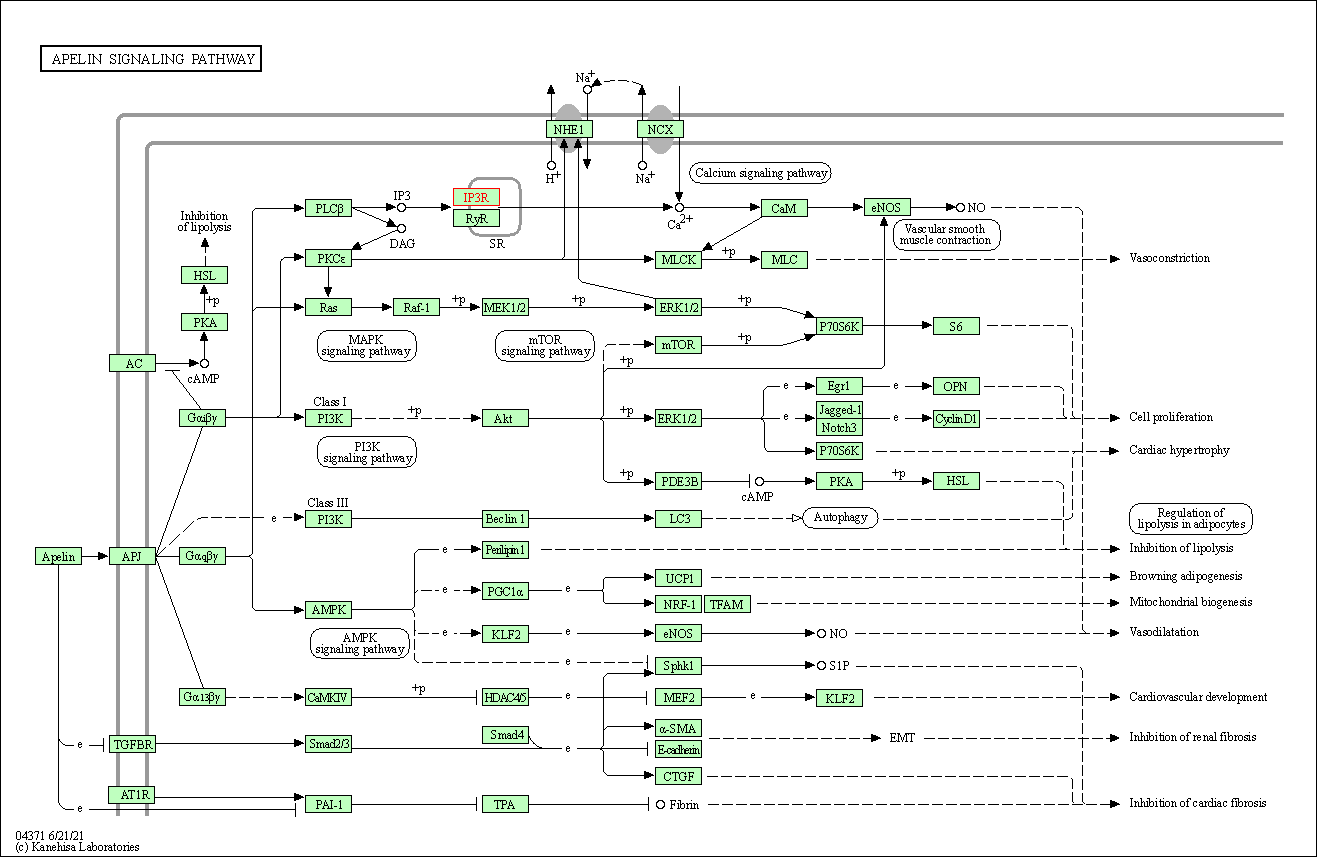
|
| Class: Environmental Information Processing => Signal transduction | Pathway Hierarchy | ||
| Gap junction | hsa04540 | Affiliated Target |
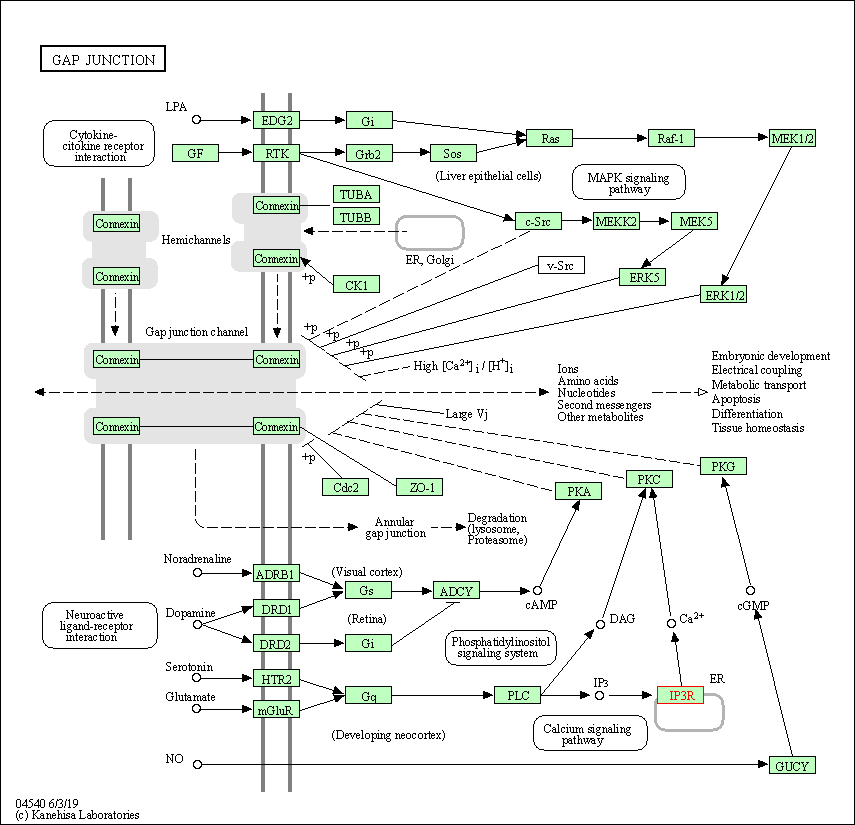
|
| Class: Cellular Processes => Cellular community - eukaryotes | Pathway Hierarchy | ||
| Platelet activation | hsa04611 | Affiliated Target |
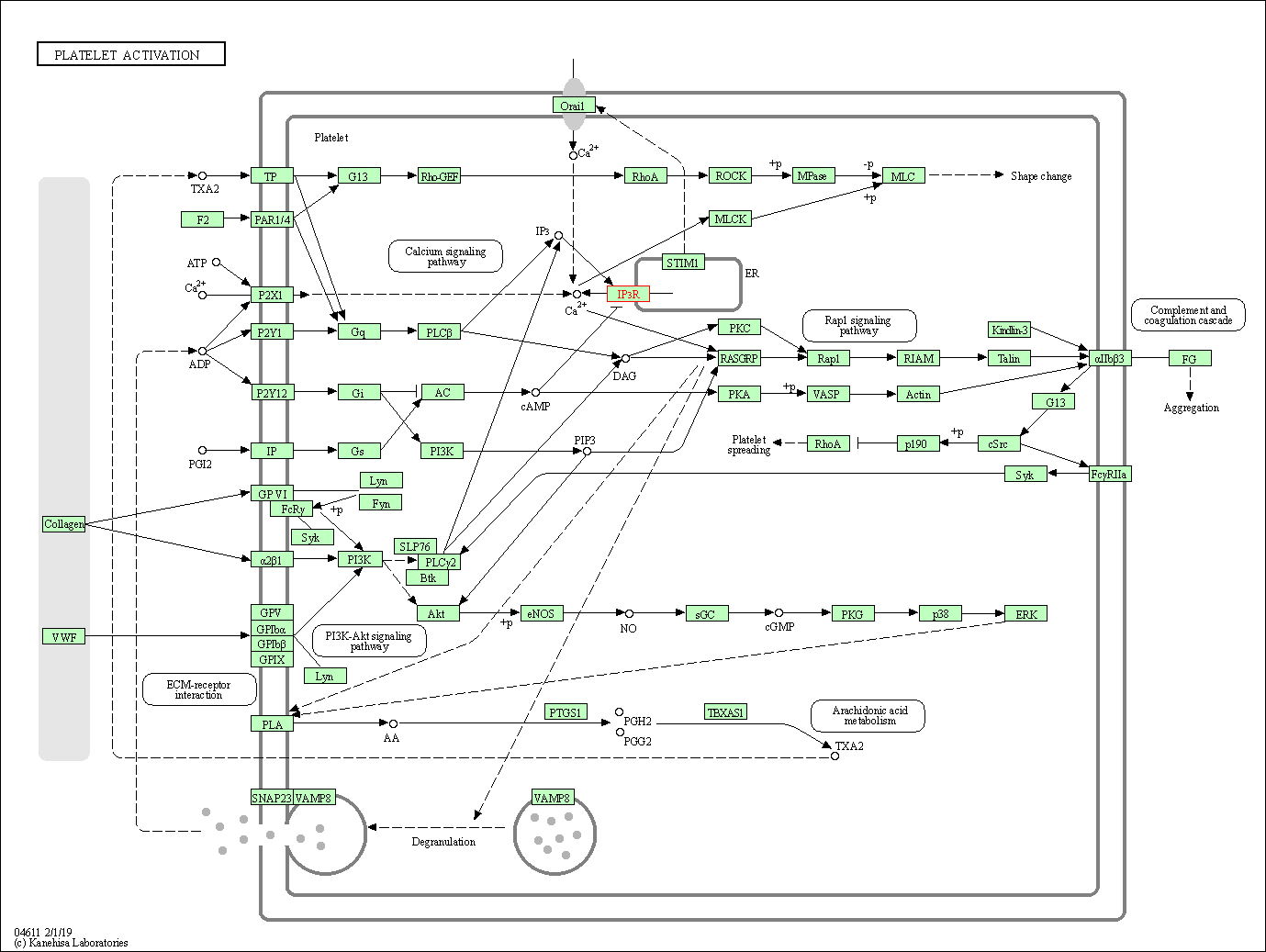
|
| Class: Organismal Systems => Immune system | Pathway Hierarchy | ||
| NOD-like receptor signaling pathway | hsa04621 | Affiliated Target |
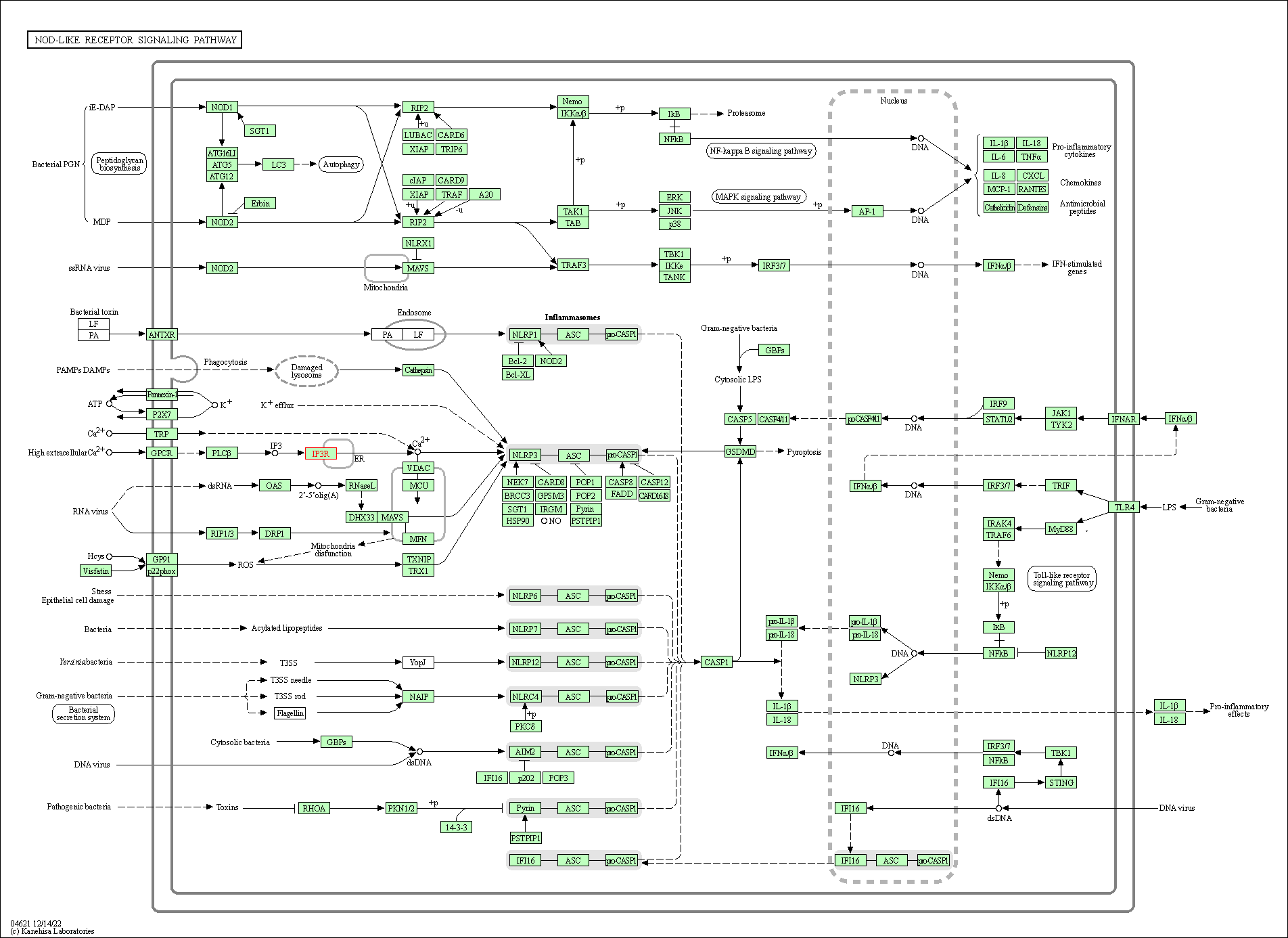
|
| Class: Organismal Systems => Immune system | Pathway Hierarchy | ||
| C-type lectin receptor signaling pathway | hsa04625 | Affiliated Target |
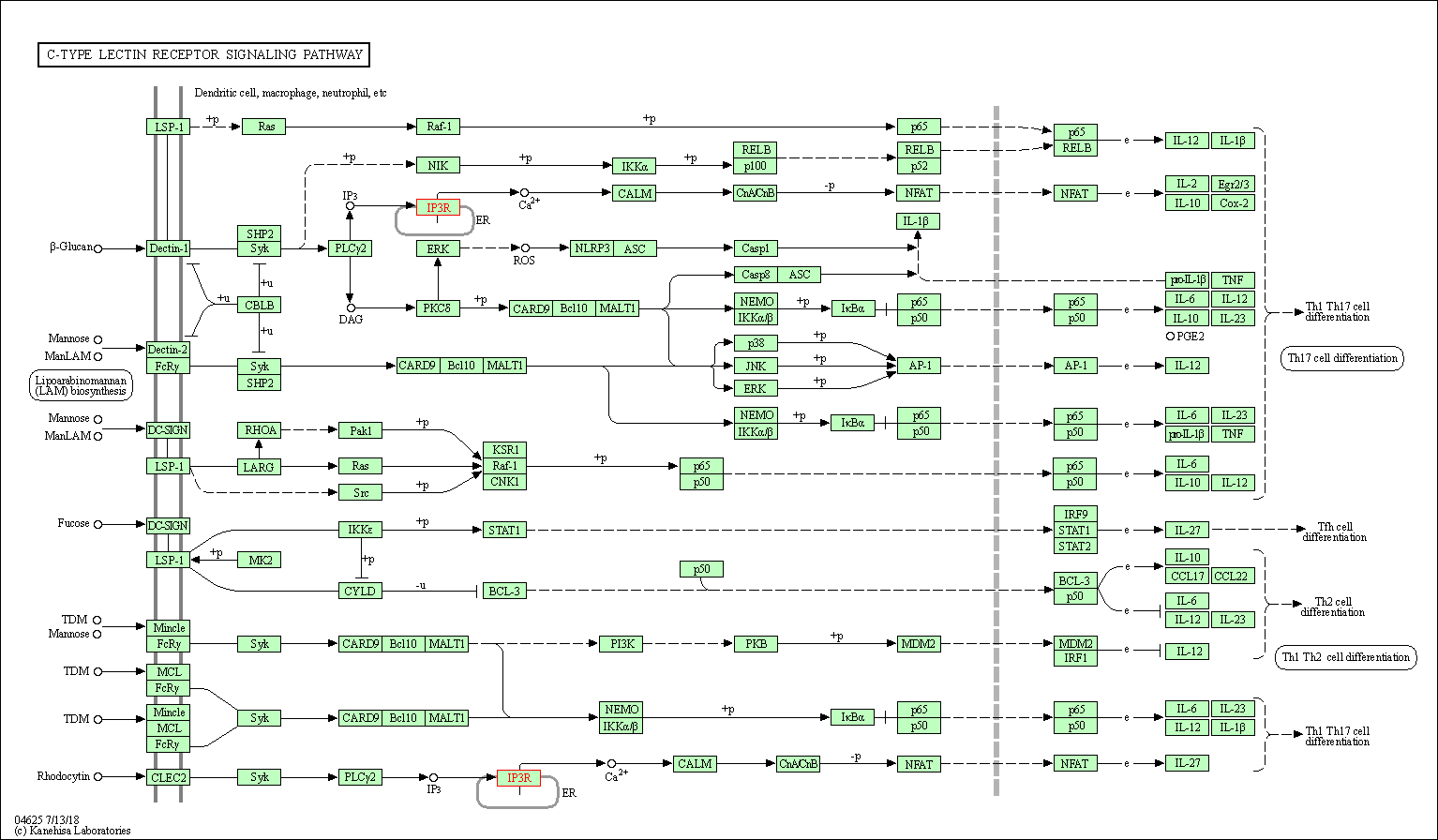
|
| Class: Organismal Systems => Immune system | Pathway Hierarchy | ||
| Long-term potentiation | hsa04720 | Affiliated Target |
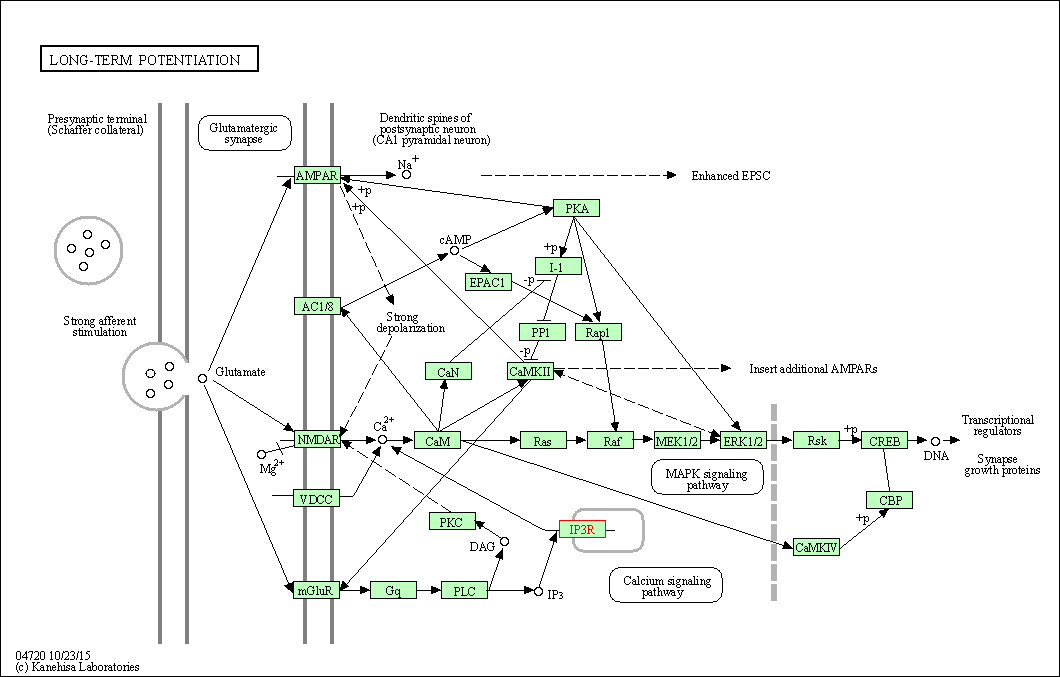
|
| Class: Organismal Systems => Nervous system | Pathway Hierarchy | ||
| Retrograde endocannabinoid signaling | hsa04723 | Affiliated Target |
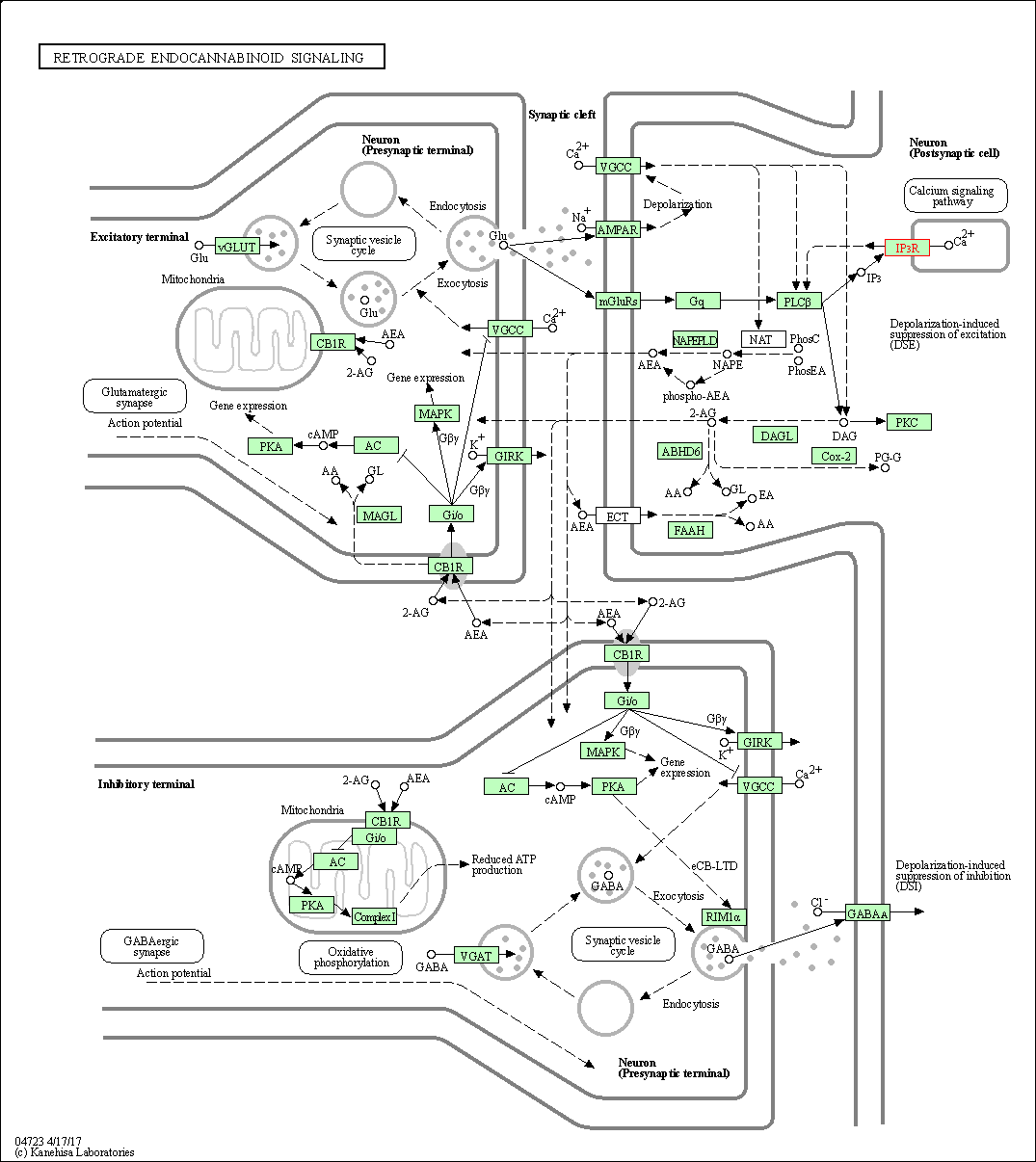
|
| Class: Organismal Systems => Nervous system | Pathway Hierarchy | ||
| Glutamatergic synapse | hsa04724 | Affiliated Target |

|
| Class: Organismal Systems => Nervous system | Pathway Hierarchy | ||
| Cholinergic synapse | hsa04725 | Affiliated Target |

|
| Class: Organismal Systems => Nervous system | Pathway Hierarchy | ||
| Serotonergic synapse | hsa04726 | Affiliated Target |
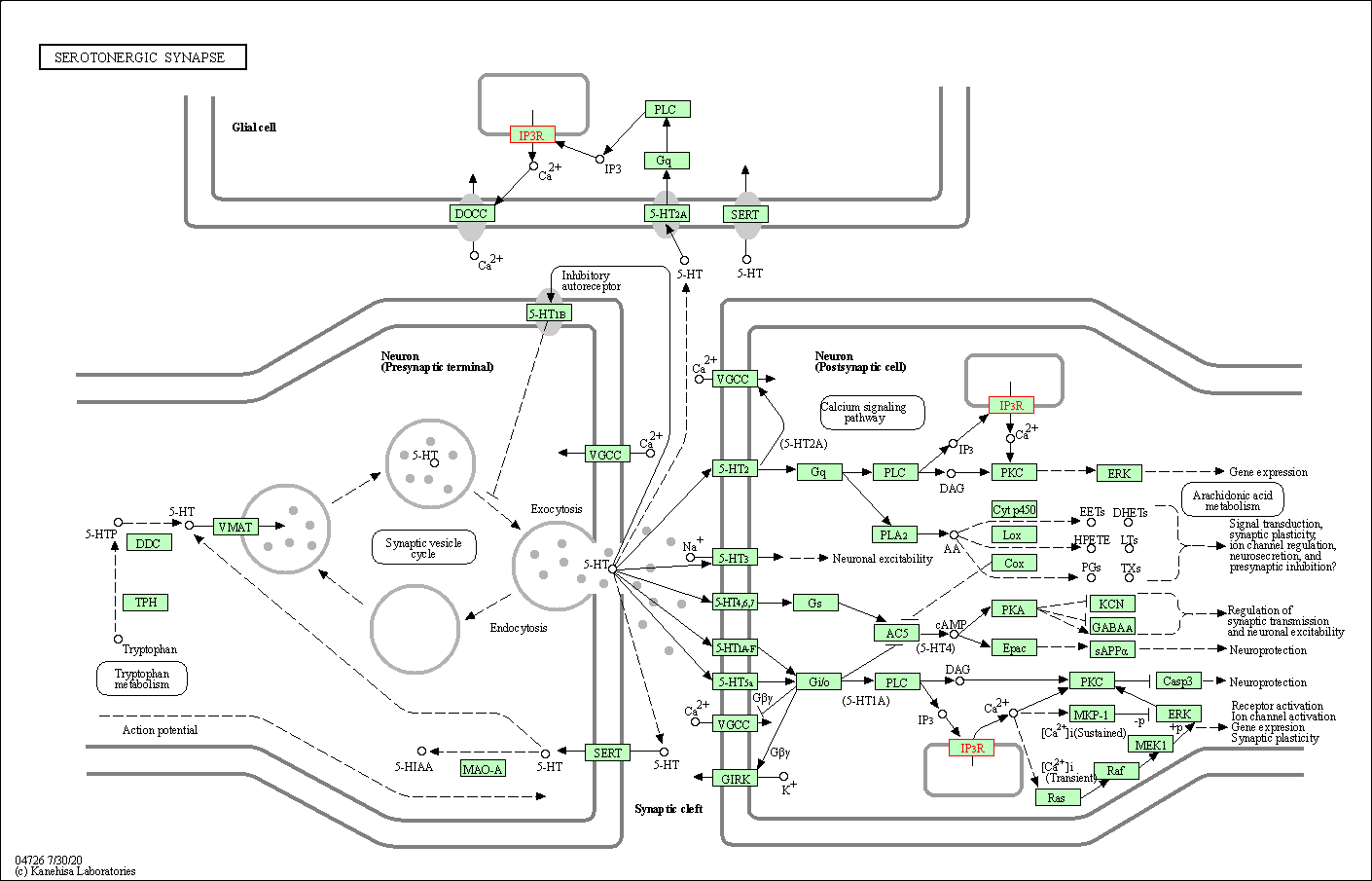
|
| Class: Organismal Systems => Nervous system | Pathway Hierarchy | ||
| Dopaminergic synapse | hsa04728 | Affiliated Target |
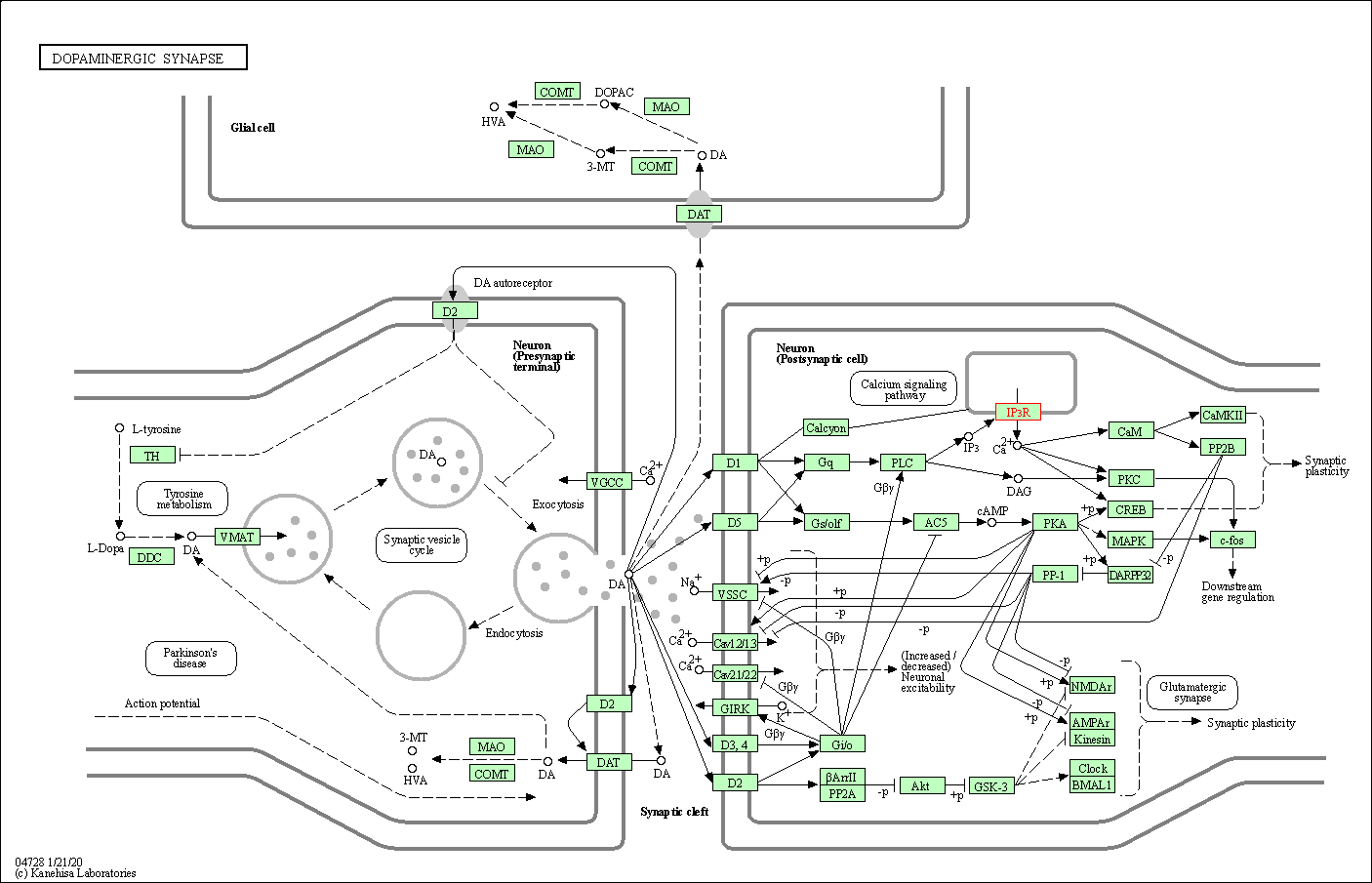
|
| Class: Organismal Systems => Nervous system | Pathway Hierarchy | ||
| Long-term depression | hsa04730 | Affiliated Target |
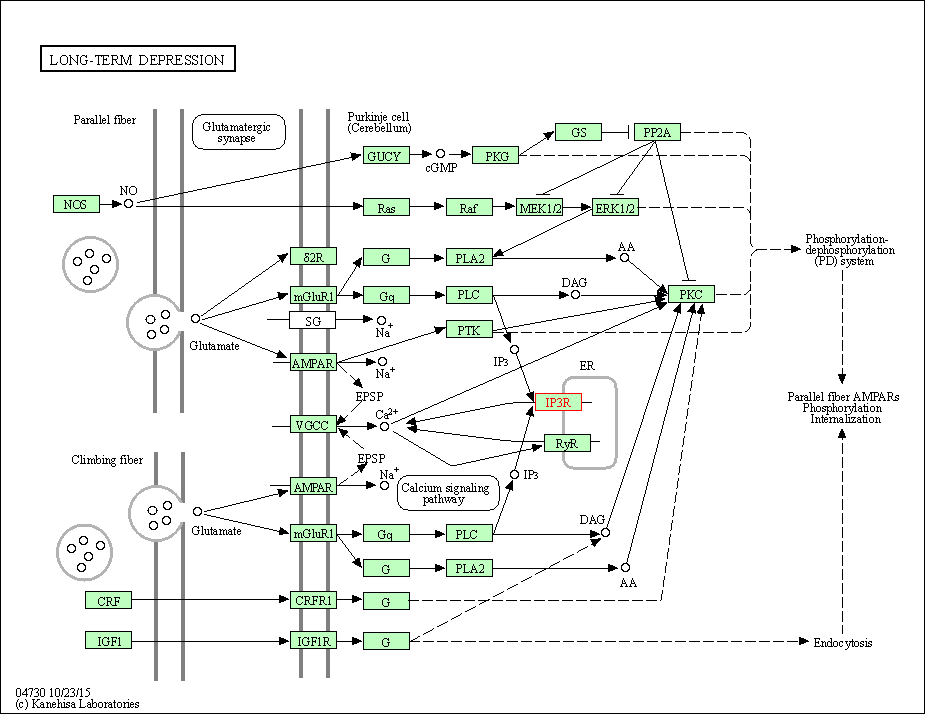
|
| Class: Organismal Systems => Nervous system | Pathway Hierarchy | ||
| Inflammatory mediator regulation of TRP channels | hsa04750 | Affiliated Target |
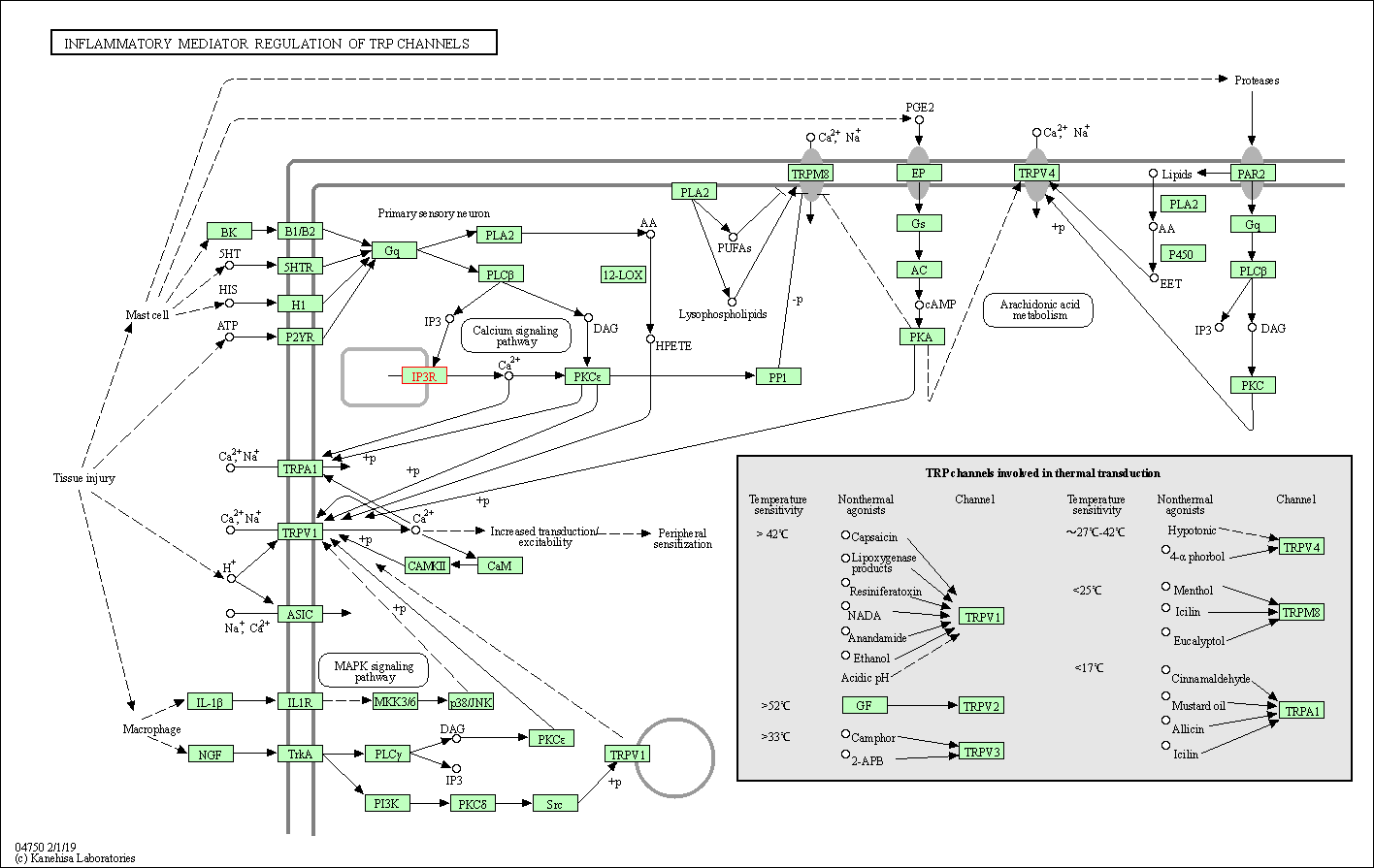
|
| Class: Organismal Systems => Sensory system | Pathway Hierarchy | ||
| GnRH signaling pathway | hsa04912 | Affiliated Target |
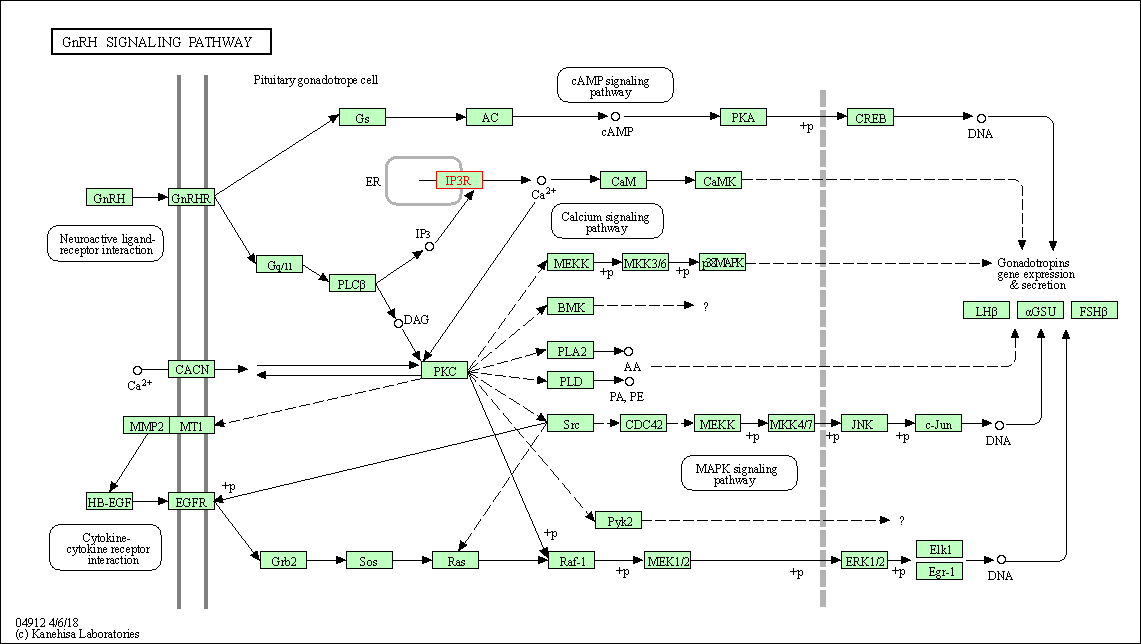
|
| Class: Organismal Systems => Endocrine system | Pathway Hierarchy | ||
| Estrogen signaling pathway | hsa04915 | Affiliated Target |
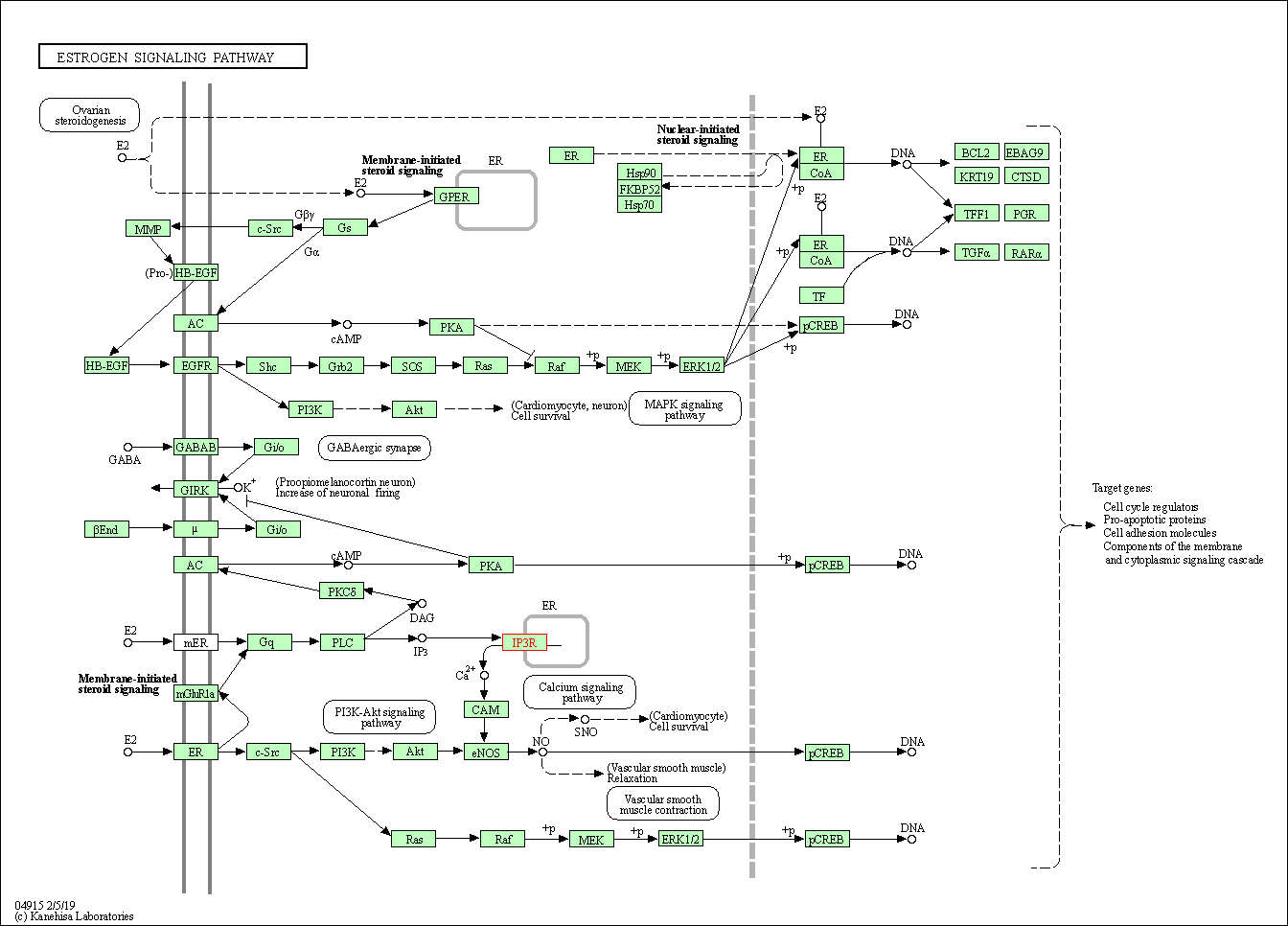
|
| Class: Organismal Systems => Endocrine system | Pathway Hierarchy | ||
| Thyroid hormone synthesis | hsa04918 | Affiliated Target |
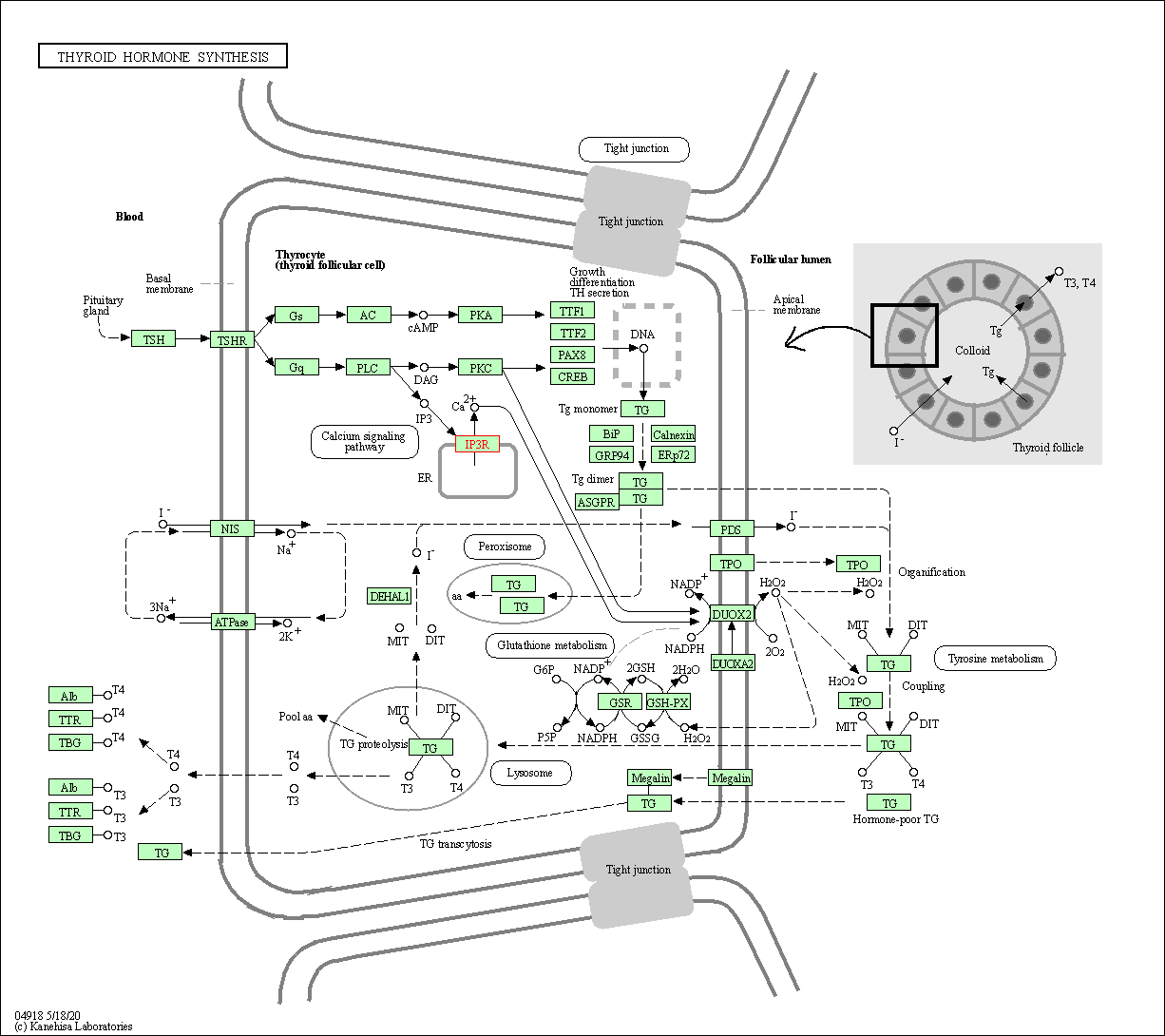
|
| Class: Organismal Systems => Endocrine system | Pathway Hierarchy | ||
| Oxytocin signaling pathway | hsa04921 | Affiliated Target |

|
| Class: Organismal Systems => Endocrine system | Pathway Hierarchy | ||
| Glucagon signaling pathway | hsa04922 | Affiliated Target |
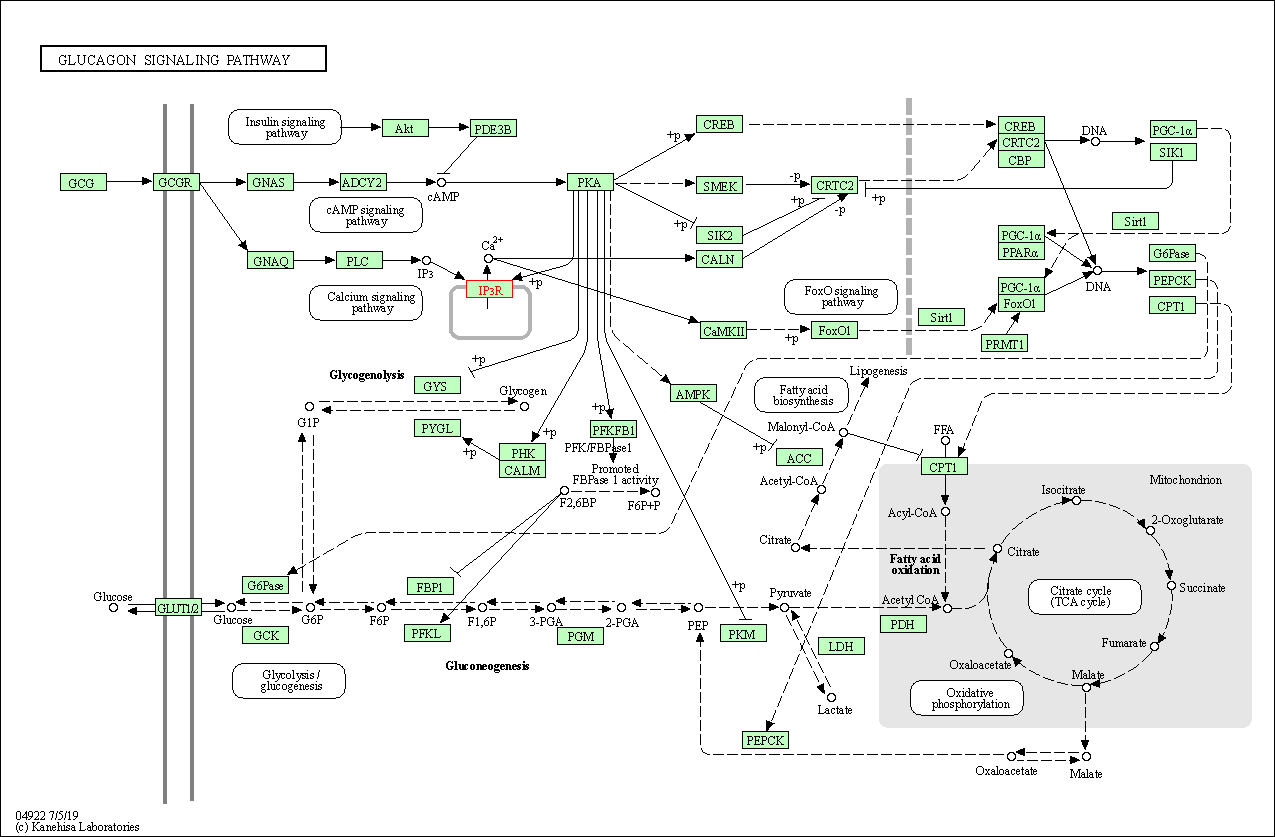
|
| Class: Organismal Systems => Endocrine system | Pathway Hierarchy | ||
| Renin secretion | hsa04924 | Affiliated Target |
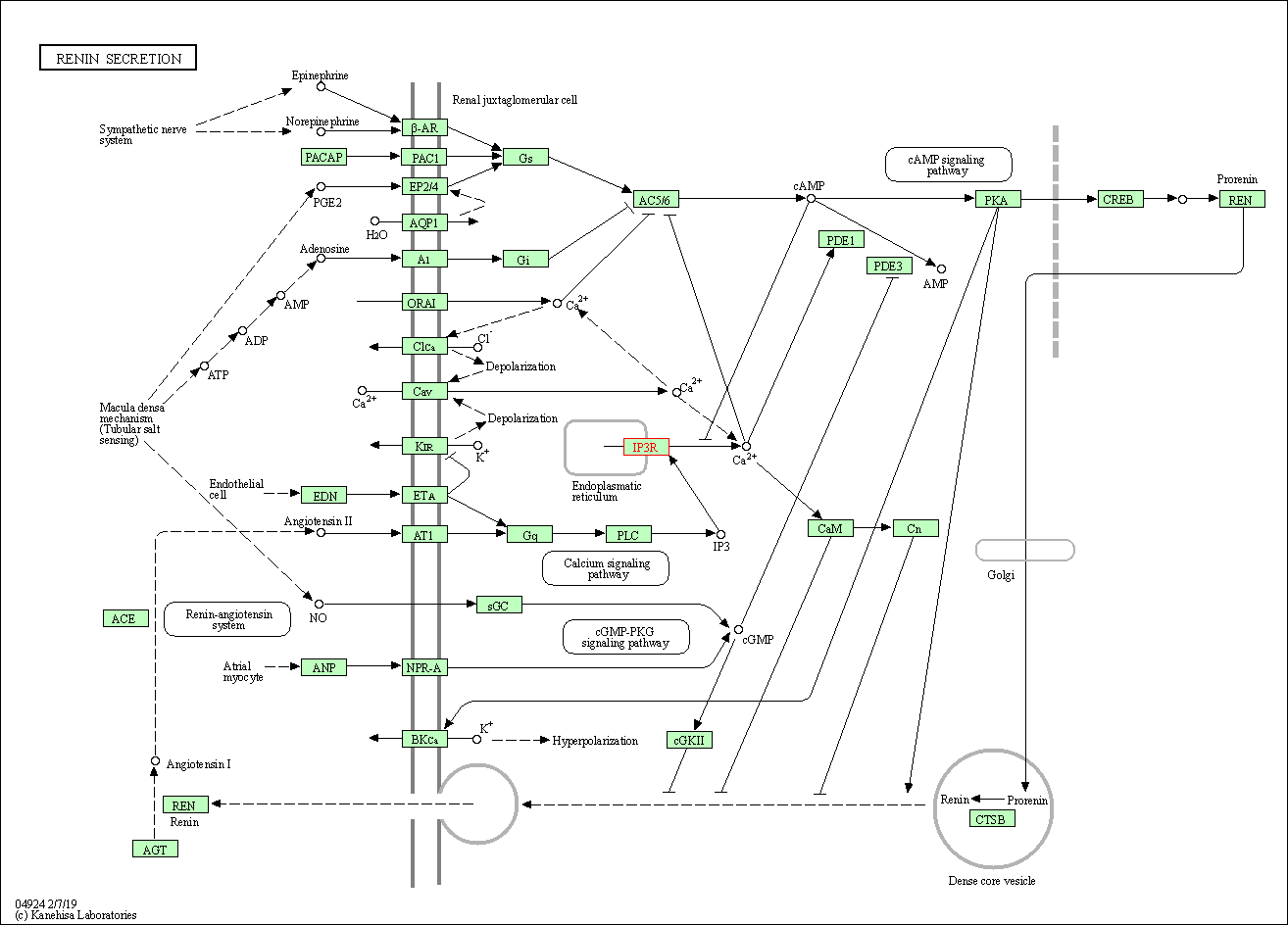
|
| Class: Organismal Systems => Endocrine system | Pathway Hierarchy | ||
| Aldosterone synthesis and secretion | hsa04925 | Affiliated Target |

|
| Class: Organismal Systems => Endocrine system | Pathway Hierarchy | ||
| Cortisol synthesis and secretion | hsa04927 | Affiliated Target |
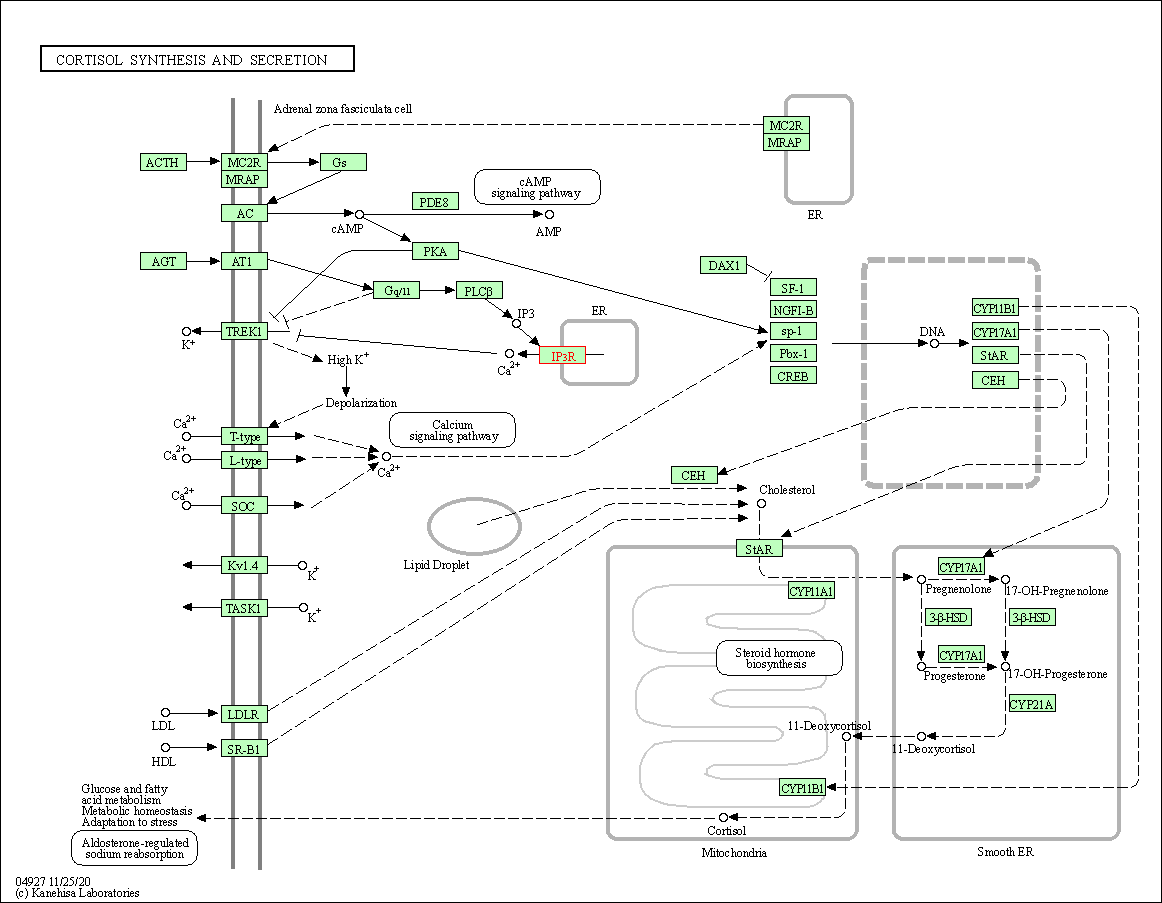
|
| Class: Organismal Systems => Endocrine system | Pathway Hierarchy | ||
| Parathyroid hormone synthesis, secretion and action | hsa04928 | Affiliated Target |

|
| Class: Organismal Systems => Endocrine system | Pathway Hierarchy | ||
| GnRH secretion | hsa04929 | Affiliated Target |

|
| Class: Organismal Systems => Endocrine system | Pathway Hierarchy | ||
| Growth hormone synthesis, secretion and action | hsa04935 | Affiliated Target |
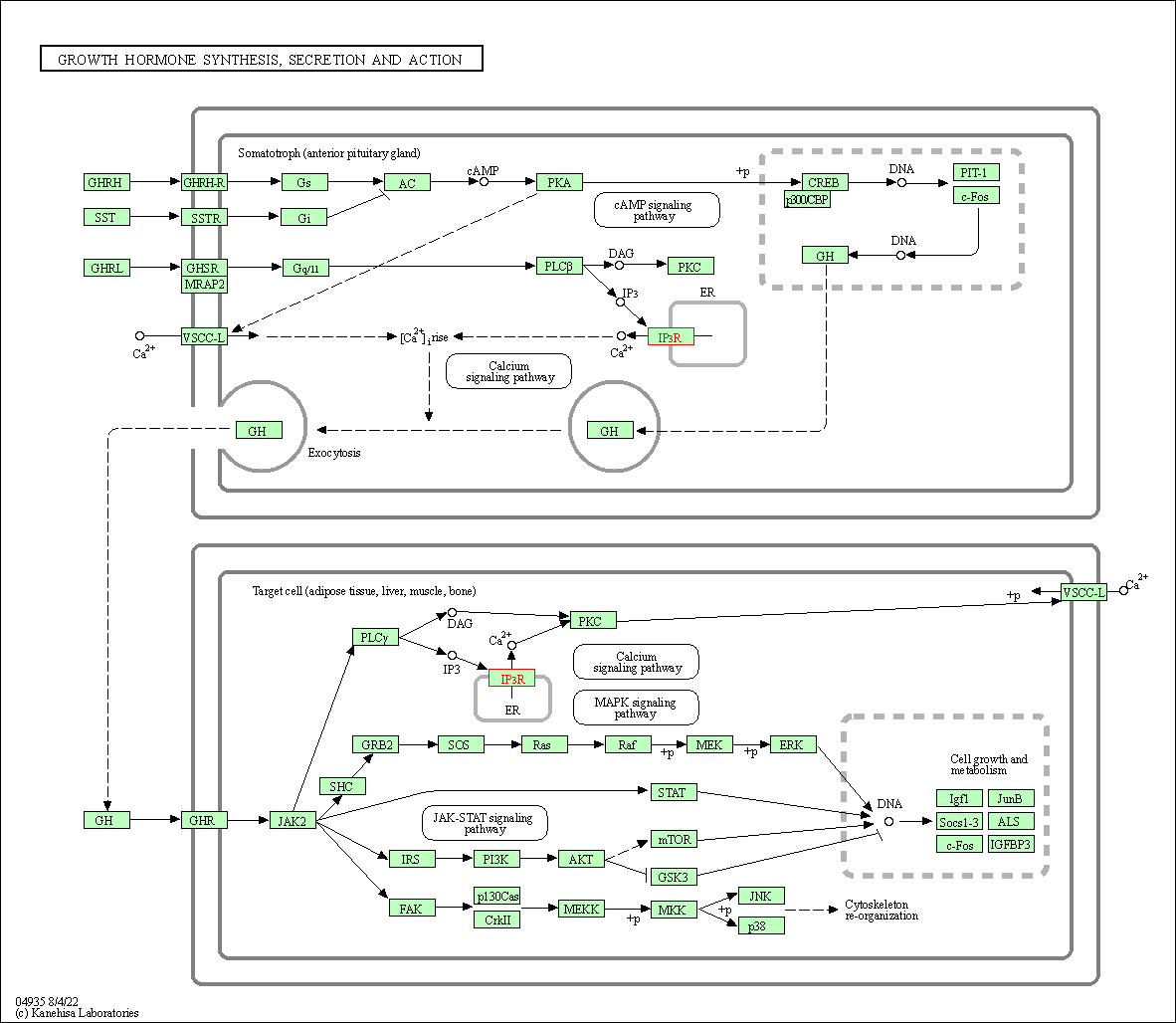
|
| Class: Organismal Systems => Endocrine system | Pathway Hierarchy | ||
| Salivary secretion | hsa04970 | Affiliated Target |
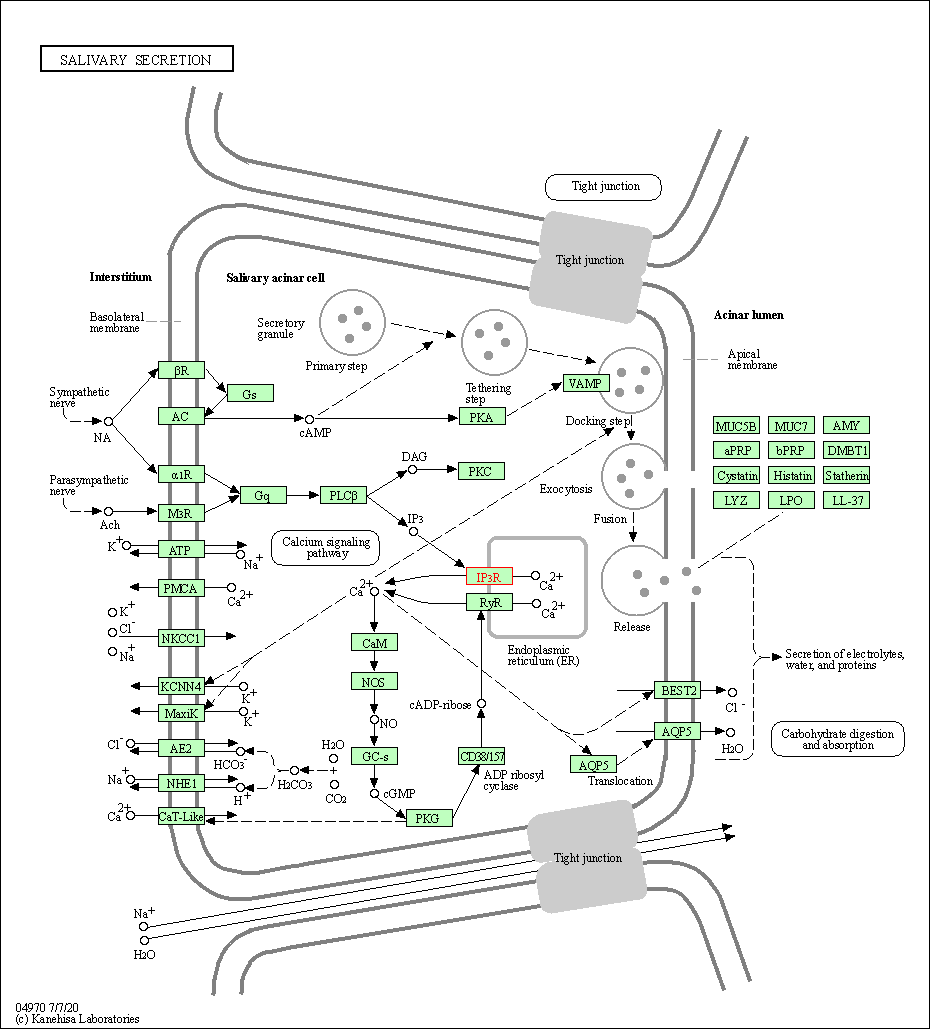
|
| Class: Organismal Systems => Digestive system | Pathway Hierarchy | ||
| Gastric acid secretion | hsa04971 | Affiliated Target |
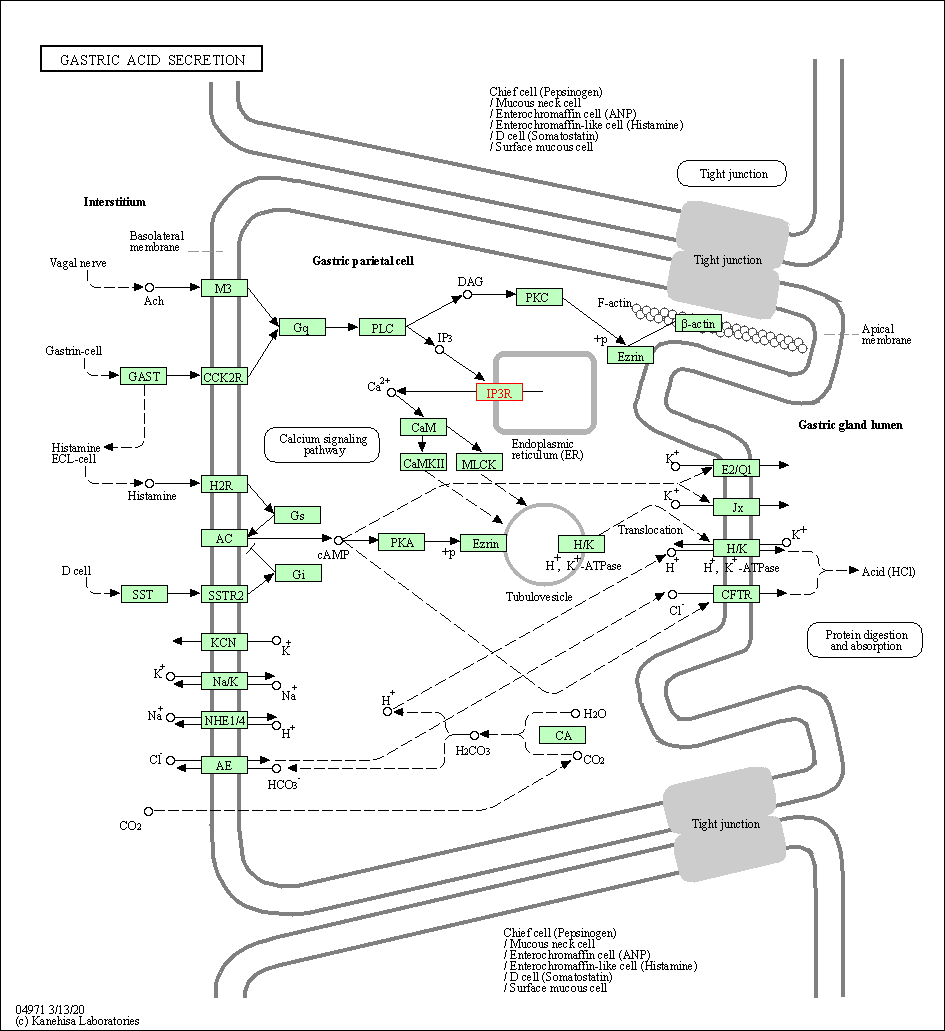
|
| Class: Organismal Systems => Digestive system | Pathway Hierarchy | ||
| Pancreatic secretion | hsa04972 | Affiliated Target |

|
| Class: Organismal Systems => Digestive system | Pathway Hierarchy | ||
| Click to Show/Hide the Information of Affiliated Human Pathways | |||
| Degree | 2 | Degree centrality | 2.15E-04 | Betweenness centrality | 2.66E-07 |
|---|---|---|---|---|---|
| Closeness centrality | 1.74E-01 | Radiality | 1.28E+01 | Clustering coefficient | 0.00E+00 |
| Neighborhood connectivity | 6.00E+00 | Topological coefficient | 6.25E-01 | Eccentricity | 13 |
| Download | Click to Download the Full PPI Network of This Target | ||||
| References | Top | |||||
|---|---|---|---|---|---|---|
| REF 1 | URL: http://www.guidetopharmacology.org Nucleic Acids Res. 2015 Oct 12. pii: gkv1037. The IUPHAR/BPS Guide to PHARMACOLOGY in 2016: towards curated quantitative interactions between 1300 protein targets and 6000 ligands. (Target id: 744). | |||||
If You Find Any Error in Data or Bug in Web Service, Please Kindly Report It to Dr. Zhou and Dr. Zhang.

